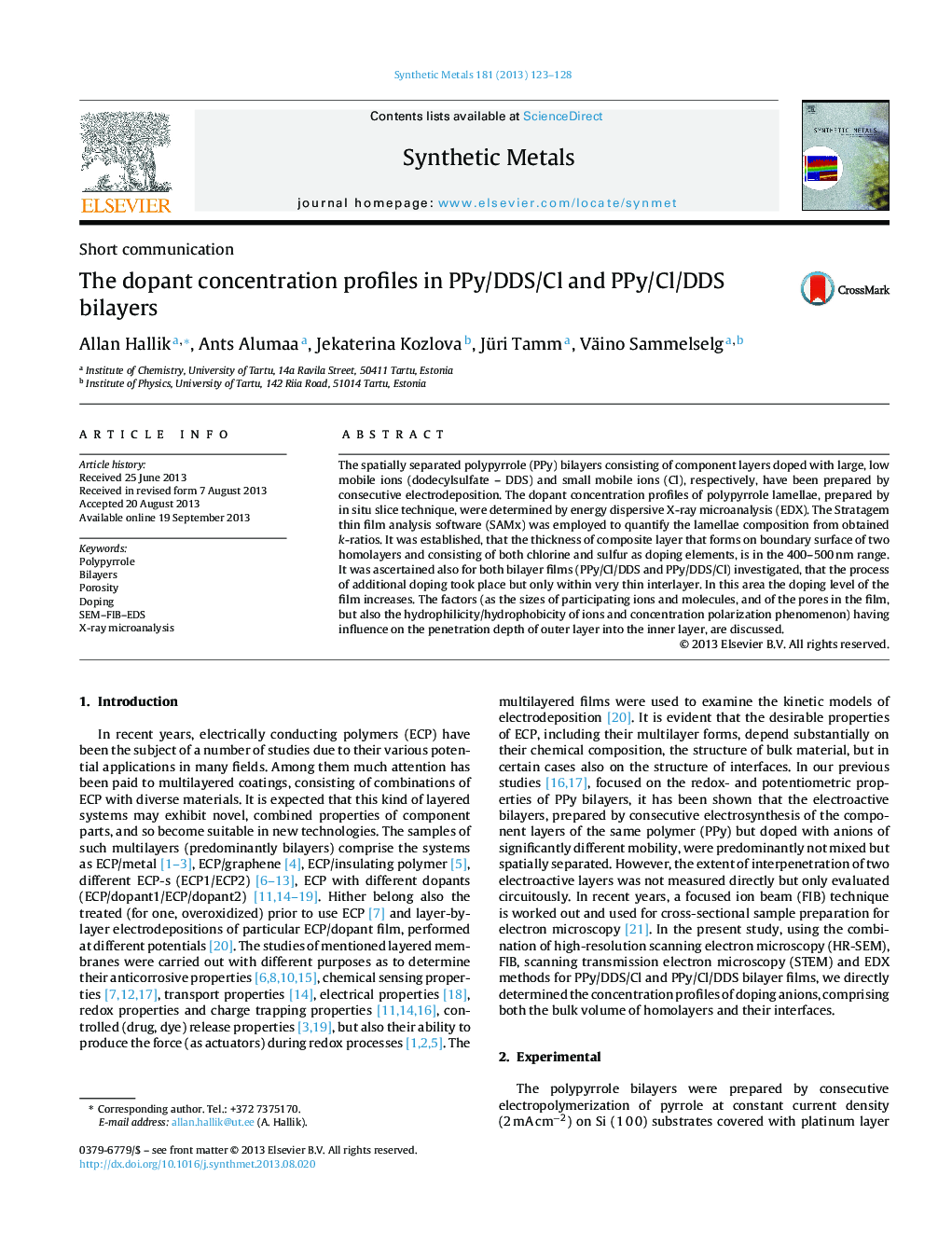| Article ID | Journal | Published Year | Pages | File Type |
|---|---|---|---|---|
| 1441217 | Synthetic Metals | 2013 | 6 Pages |
•PPy/Cl/DDS and PPy/DDS/Cl bilayers were electrochemically synthesized.•Dopant profiles in the films were successfully determined by X-ray microanalysis.•Real thicknesses of intermediate (composite) layers were of ≤400 nm.•Profiles’ shape was determined by several properties of both film and doping ions.
The spatially separated polypyrrole (PPy) bilayers consisting of component layers doped with large, low mobile ions (dodecylsulfate – DDS) and small mobile ions (Cl), respectively, have been prepared by consecutive electrodeposition. The dopant concentration profiles of polypyrrole lamellae, prepared by in situ slice technique, were determined by energy dispersive X-ray microanalysis (EDX). The Stratagem thin film analysis software (SAMx) was employed to quantify the lamellae composition from obtained k-ratios. It was established, that the thickness of composite layer that forms on boundary surface of two homolayers and consisting of both chlorine and sulfur as doping elements, is in the 400–500 nm range. It was ascertained also for both bilayer films (PPy/Cl/DDS and PPy/DDS/Cl) investigated, that the process of additional doping took place but only within very thin interlayer. In this area the doping level of the film increases. The factors (as the sizes of participating ions and molecules, and of the pores in the film, but also the hydrophilicity/hydrophobicity of ions and concentration polarization phenomenon) having influence on the penetration depth of outer layer into the inner layer, are discussed.
Graphical abstractFigure optionsDownload full-size imageDownload as PowerPoint slide
